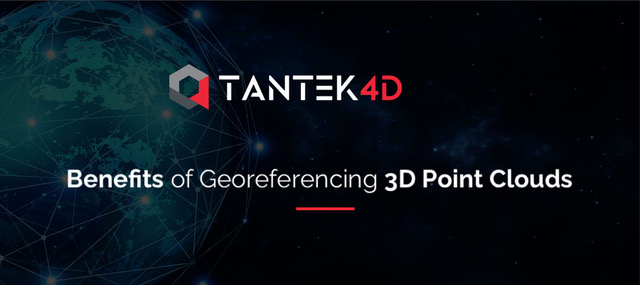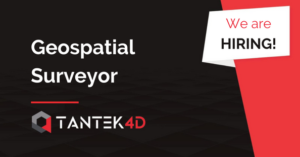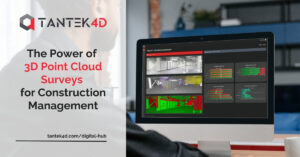Introduction
At the realm of 3D data capture and visualisation, georeferencing 3D point clouds has become a fundamental practice, and Tantek 4D consistently advises its clients to embrace this technique. Georeferencing involves attaching geographic coordinates to individual points within a 3D point cloud, effectively placing them in a real world co-ordinate system with a relative x, y and z co-ordinate. This seemingly technical process offers a vast number of benefits that greatly enhance the accuracy of 3D point cloud data. In this article, we will explore why Tantek 4D champions georeferencing and the advantages it brings to various industries and applications.
What is Georeferencing 3D Point Clouds?
Before delving into the benefits, it’s crucial to understand the concept of georeferencing 3D point clouds. At its core, georeferencing involves aligning a point cloud dataset to a geographic co-ordinate system. This geographic co-ordinate system can also be referred to as the ‘Local Co-Ordinate System’ depending on where in the world you are. This is achieved by associating each point in the cloud with precise geographic coordinates such as easting, northing and elevation or latitude, longitude, and elevation. The result is a spatially accurate representation of the environment, allowing for seamless integration with geographic information systems (GIS) and other geospatial tools.
Benefits of Georeferencing 3D Point Clouds:
- Enhanced Spatial Accuracy
The primary and most obvious benefit of georeferencing 3D point clouds is the significant improvement in spatial accuracy. Without georeferencing, point clouds exist in a virtual space with no real-world context. Georeferencing anchors the data to the a co-ordinate system, enabling precise measurements and accurate spatial analysis. This level of accuracy is invaluable in fields such as land surveying, infrastructure, construction and civil engineering, where precision is paramount.
- Seamless Integration with GIS
Georeferenced 3D point clouds seamlessly integrate with Geographic Information Systems (GIS), creating a powerful synergy between 3D visualisation and geospatial data analysis. This integration enables users to overlay point cloud data with existing geospatial datasets like maps, satellite imagery, boundaries and most importantly for specific facility survey data such as 3D Models, Topographical Surveys, Utility Surveys etc.
- Streamlined Data Sharing and Collaboration
Georeferenced point clouds facilitate efficient data sharing and collaboration. When everyone in a project is working with georeferenced data, there’s less room for interpretation or misalignment. Architects, Design Teams, and Construction Management Teams can collaborate seamlessly, reducing errors and ensuring that projects progress according to plan.
- Accurate Asset Management
For industries involved in managing physical assets, georeferenced 3D point clouds provide an accurate representation of physical assets such as Commercial/Residential Buildings, Infrastructure, Power Plants, Pharmaceutical Plants, Semi-Conductor facilities or Data Centres. This accuracy is essential for maintenance, inspections, and future planning. It helps asset managers optimise their operations, minimise downtime, and extend the lifespan of critical infrastructure.
Conclusion
Georeferencing 3D point clouds is more than just a best practice; it’s a game-changer for a wide range of industries and applications. Tantek 4D’s recommendation to Georeference 3D point clouds is rooted in the immense benefits it offers, including enhanced spatial accuracy, seamless integration with GIS, streamlined collaboration, and accurate asset management.
As technology continues to advance, georeferencing will likely become an indispensable tool for professionals seeking to harness the full potential of 3D point cloud data. Embracing this practice is not only a sound investment but also a step toward a more accurate and sustainable future across various sectors.




